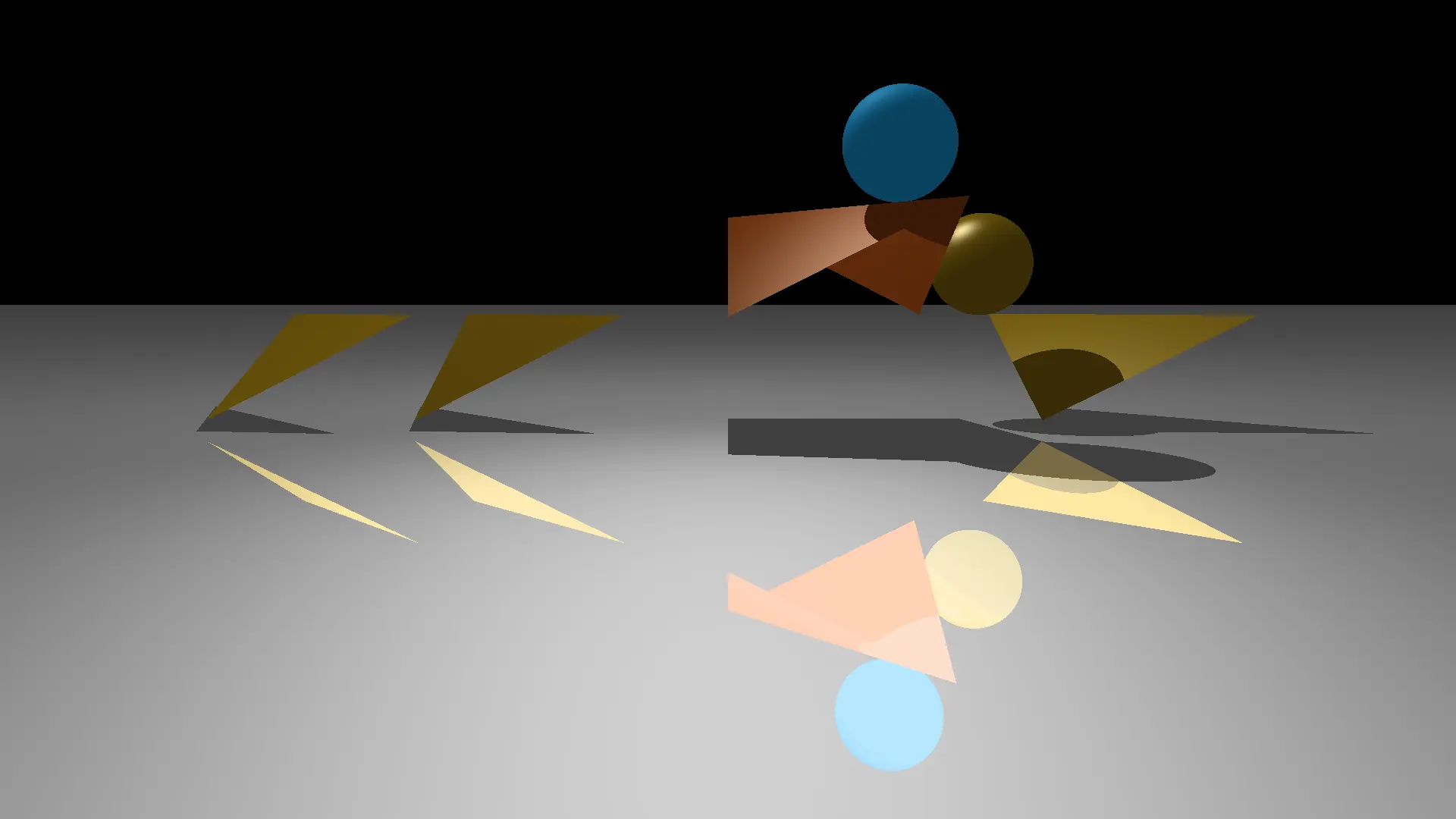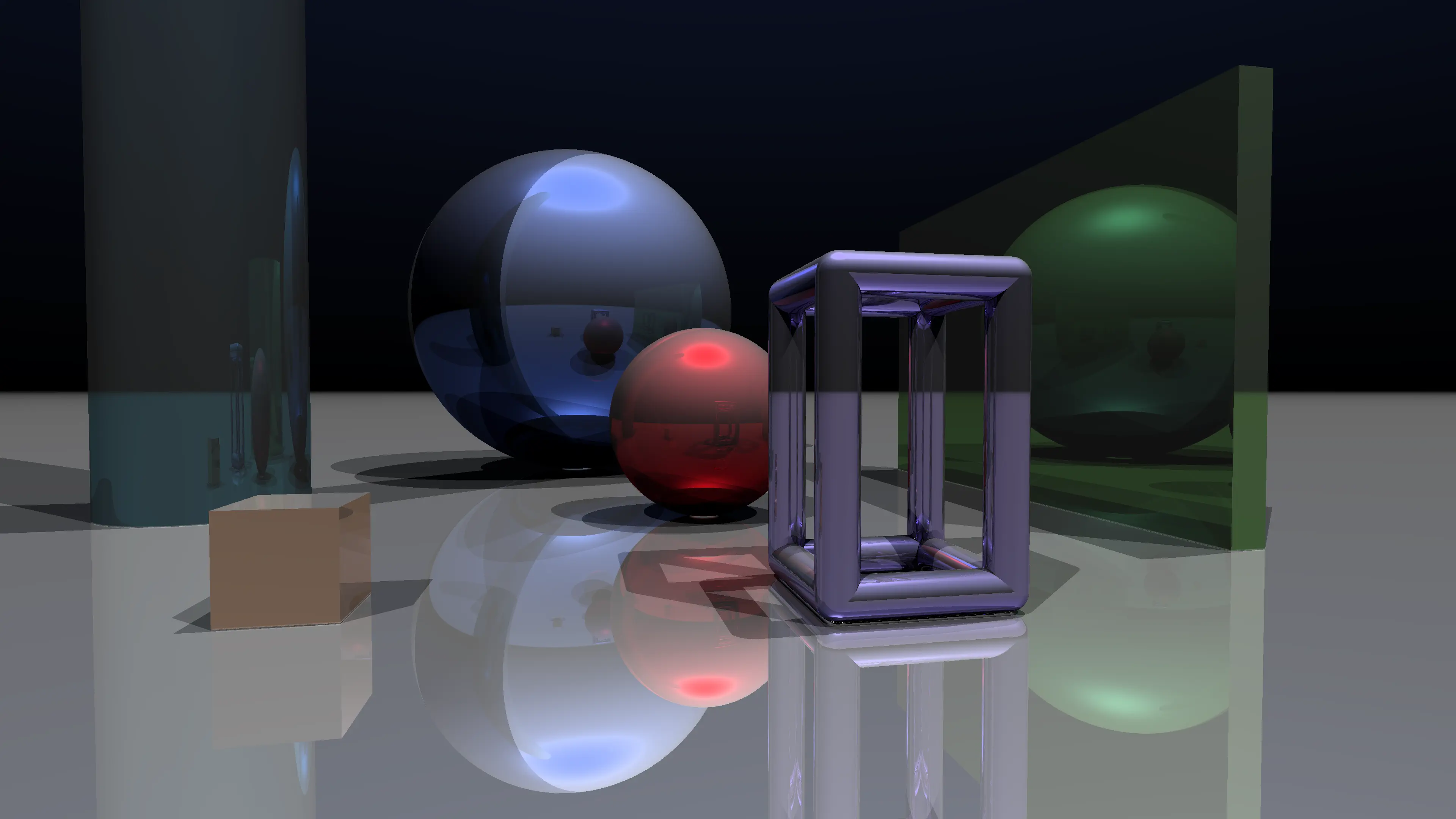A long time ago in 2010 I read the excellent book "Ray tracing from the ground up" by Kevin Suffern. While reading this book
- I translated the C++ code to Javan
- made the code more object oriented
- made the code thread-safe for parallel execution
- wrote a DSL for easy scene creation and manipulation in Groovy
- Refactored the code quite a bit to develop nice object-functional program
From 2018-2020 I ported the code to Kotlin. The groovy DSL is not a Kotlin DSL. In 2022/2023 I experimented with Kotlin multiplatform and it worked, but the APIs were changed too often. So I reverted back to JVM only in 2024.
The old code with Java and Groovy is available in the branch groovy-java.
Run the different versions with
$ ./gradlew build
$ ./gradlew swing
$ ./gradlew run --args="--world=World20AreaDisk.kt --tracer=AREA --renderer=FORK_JOIN --resolution=1080p"
$ ./gradlew run --args="--world=World66.kt --renderer=FORK_JOIN --resolution=720p"
$ ./gradlew run --args="--world=World66.kt --renderer=PARALLEL --resolution=1080p"
$ ./gradlew run --args="--world=World42.kt --renderer=COROUTINE --resolution=2160p"Choose a scene file with a left click, see the source code and click render to render it.
Some examples require PLY files that are available on the net.
For easier manipulation of scenes I implemented a DSL for scenes.
is described by the following Kotlin program:
package net.dinkla.raytracer.examples
import net.dinkla.raytracer.colors.Color
import net.dinkla.raytracer.world.Builder
import net.dinkla.raytracer.world.WorldDef
object World48 : WorldDef {
override fun world() = Builder.build {
camera(d = 1250.0, eye = p(0.0, 0.1, 10.0), lookAt = p(0, -1, 0))
ambientLight(color = Color.WHITE, ls = 0.5)
lights {
pointLight(location = p(0, 5, 0), color = c(1.0), ls = 1.0)
}
materials {
phong(id = "sky", cd = c(0.1, 0.7, 1.0), ka = 0.75, kd = 1.0)
reflective(id = "white", ks = 0.7, cd = c(1.0, 1.0, 1.0), ka = 0.5, kd = 0.75, exp = 2.0)
phong(id = "red", ks = 0.9, cd = c(0.9, 0.4, 0.1), ka = 0.5, kd = 0.75, exp = 10.0)
phong(id = "orange", ks = 0.9, cd = c(0.9, 0.7, 0.1), ka = 0.5, kd = 0.75, exp = 10.0)
}
objects {
smoothTriangle(a = p(-5, 0, -1), b = p(-5, -1, 1), c = p(-3, 0, 1), material = "orange")
plane(point = p(0.0,-1.1,0.0), normal = n(0, 1, 0), material = "white")
ply(material = "red", fileName = "resources/TwoTriangles.ply")
sphere(center = p(2.5, 0.5, 0.5), radius = 0.5, material = "orange")
sphere(center = p(1.5, 1.5, 1.5), radius = 0.5, material = "sky")
triangle(a = p(-3, 0, -1), b = p(-3, -1, 1), c = p(-1, 0, 1), material = "orange")
triangle(a = p(3, 0, -1), b = p(3, -1, 1), c = p(5, 0, 1), material = "orange")
}
}
}See my home page for more information and examples.
Here is another example:
The Swing user interface runs with all Java versions.
ray tracing, rendering, Java, Groovy, DSL, ambient occlusion, Kotlin
Written by Jörn Dinkla.
The folder resources contains the following:
- TwoTriangles.ply is from Kevin Suffern, the author of the book.
- Isis.ply was downloaded from Cyberware (dissolved since 2011 )
The project uses refreshVersions
$ gradle refreshVersions(c) 2010 - 2024 Jörn Dinkla https://www.dinkla.net


